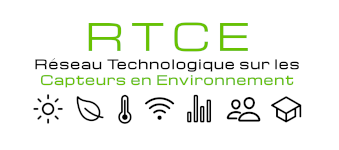In this presentation, we will overview our recent development of the following spectroscopic instruments and their applications in atmospheric observation and environmental monitoring :
(1) LHR (project CNES)
Monitoring of vertical concentration profiles of key atmospheric trace gases, in particular greenhouse gases (GHGs), is essential for our understanding of regional air quality and global climate change trends. In this context, infrared laser heterodyne radiometers (LHR) have been developed for ground-based remote measurements of GHGs, such as CH4, N2O, CO2 (including 13CO2/12CO2), H2O vapor (and its isotopologue HDO), in the atmospheric column.
(2) CE-FRS (project ANR)
The hydroperoxyl radical (HO2) plays a central role in atmospheric chemistry. The measurement of their concentration is thus vital to identify a lack in the understanding of gas phase oxidation processes. The currently used measurement instruments are based on chemical conversion leading to unavoidable interferences. In the framework of the “ICAR-HO2” ANR project, we are developing an innovative instrument based on cavity enhanced Faraday rotation spectroscopy (CE-FRS) for direct measurement of HO2 concentration in the atmosphere. The availability of such scientific instrument, more compact and less expensive will allow more laboratories to access to this type of measurements and wider deployments in field campaigns and in observatories for long term measurement.
(3) Ocean-CO2 (project CNRS-INSU)
The ocean absorbs nearly 30% of anthropogenic CO2 emission. While the release of dissolved CO₂ from the ocean into the atmosphere occurs through the process air-sea gas exchange when conditions favor the escape of CO₂ (e.g., warmer waters, upwelling, wind-driven mixing). This air-sea gas exchange process is essential in regulating the global carbon cycle. The balance between these « absorption-emission » processes is critical for understanding how the ocean influences atmospheric CO2 levels via air-sea gas exchange, and thus the impacts on climate change, ocean acidification, marine ecosystem health. In this context, we are developing an optical sensing platform for carbon measurement (CO2 and the stable isotope ratios d13C) at sea surface using drone in synergy with ship-borne measurement.
The developed instruments as well as the results related to the instruments' tests/validation and their real-world applications will be presented and discussed.

 PDF version
PDF version
